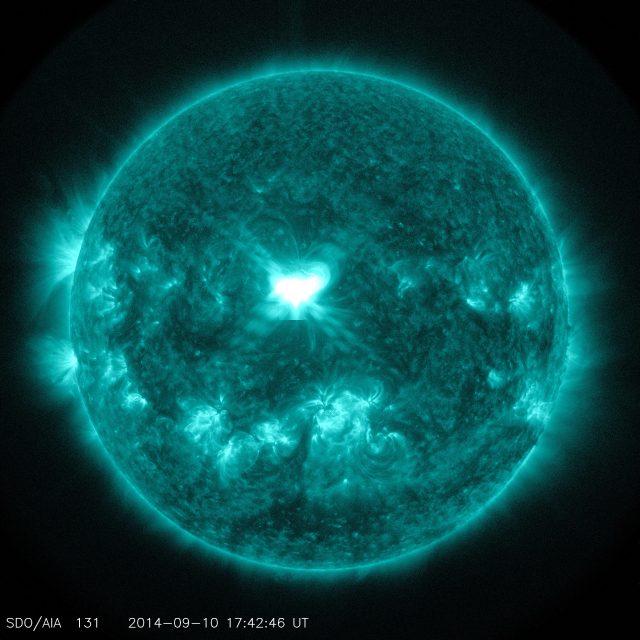Extreme solar storms could be more common than expected

An X1.6 class solar flare flashes in the middle of the sun on Sept. 10, 2014. (credit: NASA/SDO)
Scientists studying ancient ice cores extracted from Greenland and Antarctica have found further evidence of two very powerful solar storms in the last 1,300 years, raising concerns about similar events in the future. Extreme solar storms pose a threat to all forms of electronic technology.
In 2012, Japanese scientists first reported the discovery of a spike of carbon-14 in cedar trees on that island during the AD 774-775 time frame. Since then, similar spikes have been observed in tree rings from the same era obtained on other continents. And thanks to a college biochemistry student, scientists have rooted the event in history through a reference in the Anglo-Saxon Chronicle, which cites a "red crucifix" appearing in the heavens after sunset in the year 774.
It hasn't been entirely clear what caused this radioactive spike, however, and exotic theories such as a giant comet hitting the Sun or a nearby supernova have been put forward to explain it. Now researchers led by geologist Raimund Muscheler of Lund University in Sweden say they have solved the mystery of both the 774-775 AD event as well as a similar one in 993-994 AD. In addition to carbon-14, they have linked radioactive beryllium to both events, firmly establishing them as solar flares.
Read 5 remaining paragraphs | Comments